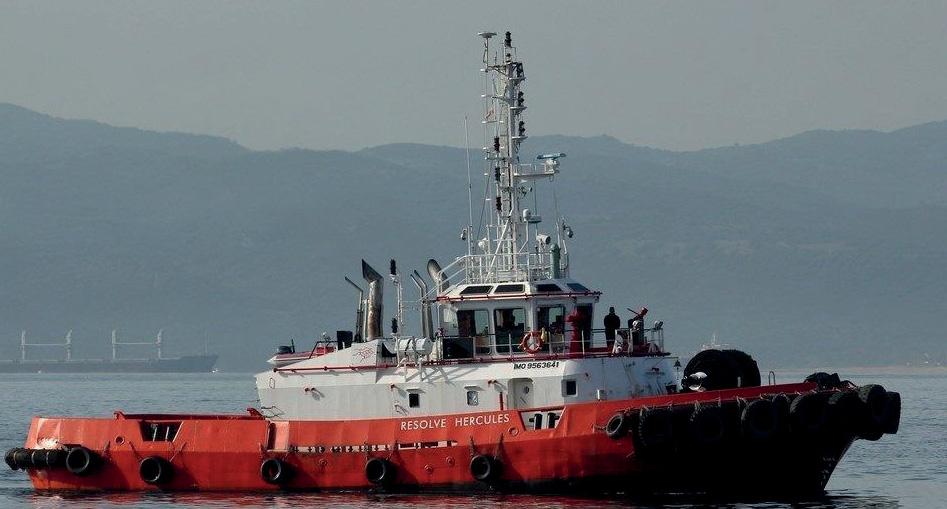
10 minute read
Fuel removal
HISTORIC FUEL REMOVAL TASK FOR RESOLVE
US-based salvor Resolve Marine has recovered fuel oil from a tanker sunk by a German submarine nearly 80 years ago, 70 miles off Florida.
A marine archeological survey established that what had been thought to be the tanker Munger T Ball was in fact the Joseph M Cudahy, another tanker sunk by a German U boat. In an operation lasting 40 days, Resolve employed divers, marine archeologists, a work class ROV and technicians to remove 35,000 gallons of heavy oil from multiple tanks. The operation followed a similar hot-tap fuel removal task for Resolve earlier in 2021 for the Canadian Coast Guard off the west coast of Canada, another example of an historic wreck that has retained fuel, presenting potential pollution risks as it deteriorates (see MJ September 2021).
Another wreck removal operation has been completed by Resolve, contracted by a London-based P&I Club for the general cargo vessel Cdry Blue which had grounded on the south coast of Sardinia. Resolve’s crane barge RMG 20 was towed to the site from its base in Gibraltar by the tug Resolve Hercules and using a combination of the crane barge, chain pullers and lift bags Cdry Blue along with associated debris was removed from the area.
Another operation in the same region saw Resolve assist a loaded container vessel that grounded while moving anchorages in the Suez Canal. An inspection by a Resolve salvage team flown in from the Netherlands, including by divers determined that cargo needed to be removed to facilitate refloating and after a salvage plan was developed and approved by the Suez authorities the vessel was refloated by two local tugs.
A potentially major vessel casualty and pollution situation was averted late in 2021 when a container ship transiting the Strait of Juan de Fuca near Vancouver Island experienced heavy weather resulting in the loss of and shifting of several containers. A subsequent fire among the shifting boxes threatened to escalate an already dangerous situation and Resolve was contracted by the vessel’s owners and their insurers with three firefighting tugs tasked to assist along with the salvor’s firefighting team based in Seattle and pumps from its Seattle and San Francisco response depots. The efforts of all concerned were successful and after the cargo was stabilised the vessel was able to proceed to a container terminal for discharging.
8 Resolve Hercules assisted in a wreck removal
operation off Sardinia
Another operation in the same region saw Resolve assist a loaded container vessel that grounded while moving anchorages in the Suez Canal. An inspection by a Resolve salvage team flown in from the Netherlands, including by divers determined that cargo needed to be removed to facilitate refloating and after a salvage plan was developed and approved by the Suez authorities the vessel was refloated by two local tugs
8 Abeille Liberté was on hand to avert a potential
pollution disaster off the French coast
SALVAGE ROUND-UP
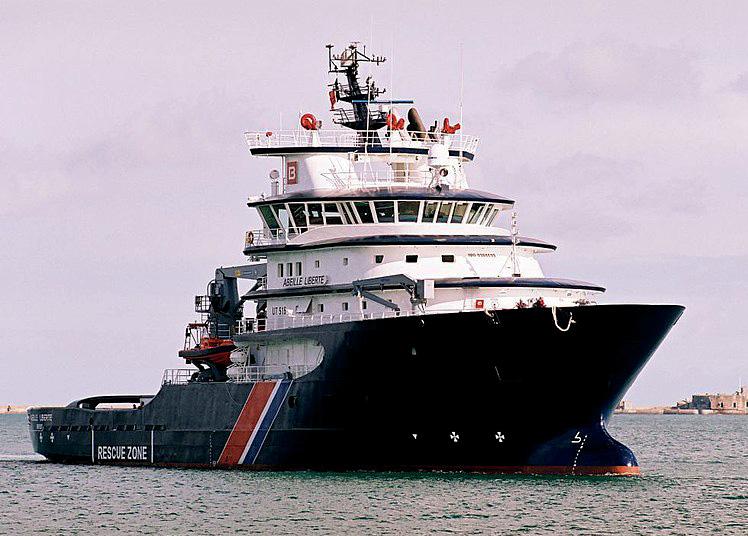
A sunken fi shing vessel in Norway, disabled tanker in the Western Approaches and an oil spill in Chile, incidents requiring the attention of the professional salvage industry.
A complex wreck removal project has been completed by Scaldis Salvage after a 65m fishing vessel sank following a fire while alongside at Tromsø in Northern Norway. The crew were safely evacuated and the vessel settled on the seabed, its starboard side above the waterline.
Scaldis was contracted to recover the 1,800t vessel and the Antwerp-based salvor’s heavylift vessel Gulliver was mobilised from Flushing to Grøtsund in the Arctic Circle to prepare the rigging. Its lifting chains were installed around the wreck’s hull by raising the vessel’s stern with the main lifting blocks while simultaneously using both auxiliaries to install the chains. The wreck was lifted and moved to deeper water where after bringing it upright through parbuckling was lowered, patches applied until it was watertight and lowered further until the vessel was floating again.
Memories of previous disasters would have been at the forefront of the minds of French maritime authorities when the bulk carrier TBC Progress, laden with 15,000t of grain experienced propulsion problems in storm force 10 conditions, 25nm off Cap de la Hague. Les Abeilles emergency towing vessel Abeille Liberté was tasked under LOF with an assessment and response team along with towing crew placed on board by helicopter. If ever the value of readily available ETVs was to be proved it was here where TBC Progress was taken under tow just three miles from the coast avoiding grounding with certain total loss and substantial pollution. The vessel was redelivered to owners in Le Havre, Les Abeilles modestly stating: “It’s been a tough one.”
CPT Remolcadores has reported deploying its oil spill emergency response teams after the 14m Algarrobo “had an accident” causing it to sink in Puerto Montt, Chile. The Chilean response company was tasked to contain the spill of hydrocarbons and in an operation over 30 days successfully controlled contamination
with what the company said was “efficient and effective reaction times”. Using divers, a total of 2,700 litres of potential pollutants were recovered, CPT adding this type of work would enable it: “to position itself in the market as a reliable alternative in emergencies” adding it is the: “first and only tugboat company certified in oil spill response in Chile.”
8 Boskalis has published a book describing
the eff orts of subsidiary Smit Salvage with refl oating the container ship Ever Given in the Suez Canal.
Salvage companies are sometimes shy in reporting details of what are often difficult and dangerous operations that save lives, protect property and preserve the environment, so the book The Salvage of the Ever Given must be welcomed. It was prompted by the global media attention and request for information following the grounding and the 80 page book is a behind-the-scenes look at the incident. Generously worded, well-illustrated with photos not seen previously, and reasonably priced it is in Dutch or English and can be ordered through the Boskalis webshop https://shop.boskalis.com/books
8 Concarneau France-based tug builder Piriou
has consolidated its newbuilding capacity with the takeover of ATG Shipyard in Romania.
Piriou had subcontracted work to ATG previously following the trend for western European shipyards to construct hulls in countries with lower labour costs and the acquisition will allow the company to offer vessels including tugs, 100% built by Piriou and aid its ambition of doubling activity by
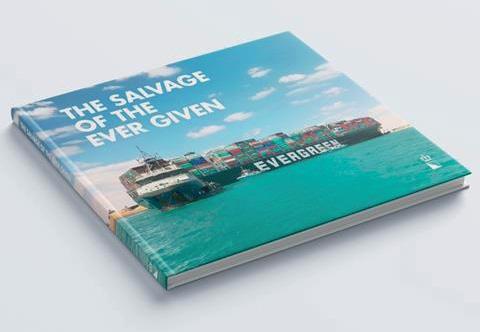
Credit: Boskalis
8 The Salvage of the Ever Given
2025. ATG has four 110m assembly halls and a 250m long outfitting quay with a Synchrolift of up to 3,000t capacity.
8 Another European shipyard expanding its
presence is Sanmar who has acquired a third yard in Turkey.
The company already builds tugs at Sanmar Tuzla and Sanmar Altinova and the latest expansion involves purchase of a small shipyard that specialises in the construction and repair of small workboats and fishing vessels, located next to the Tuzla facility. After rebuilding to meet Sanmar’s standards including new offices, warehouses and pre-assembly halls it will be optimised for construction of the new ElectRA class electric tugs designed by Robert Allan Ltd and built by Sanmar.
8 Damen Shipyards Group is expanding its
global servicing facilities with the opening of a new service hub in Hamburg, Germany.
An important part of Damen’s offering to customers is its network of local facilities providing speedy and specialist response to servicing its products with this new centre available to non-Damen vessel customers also. The new hub will serve clients in Denmark and Poland as well as Germany and be staffed by local personnel with experience in shipbuilding and maintenance in their region, an expansion of its network of local suppliers is also taking place.

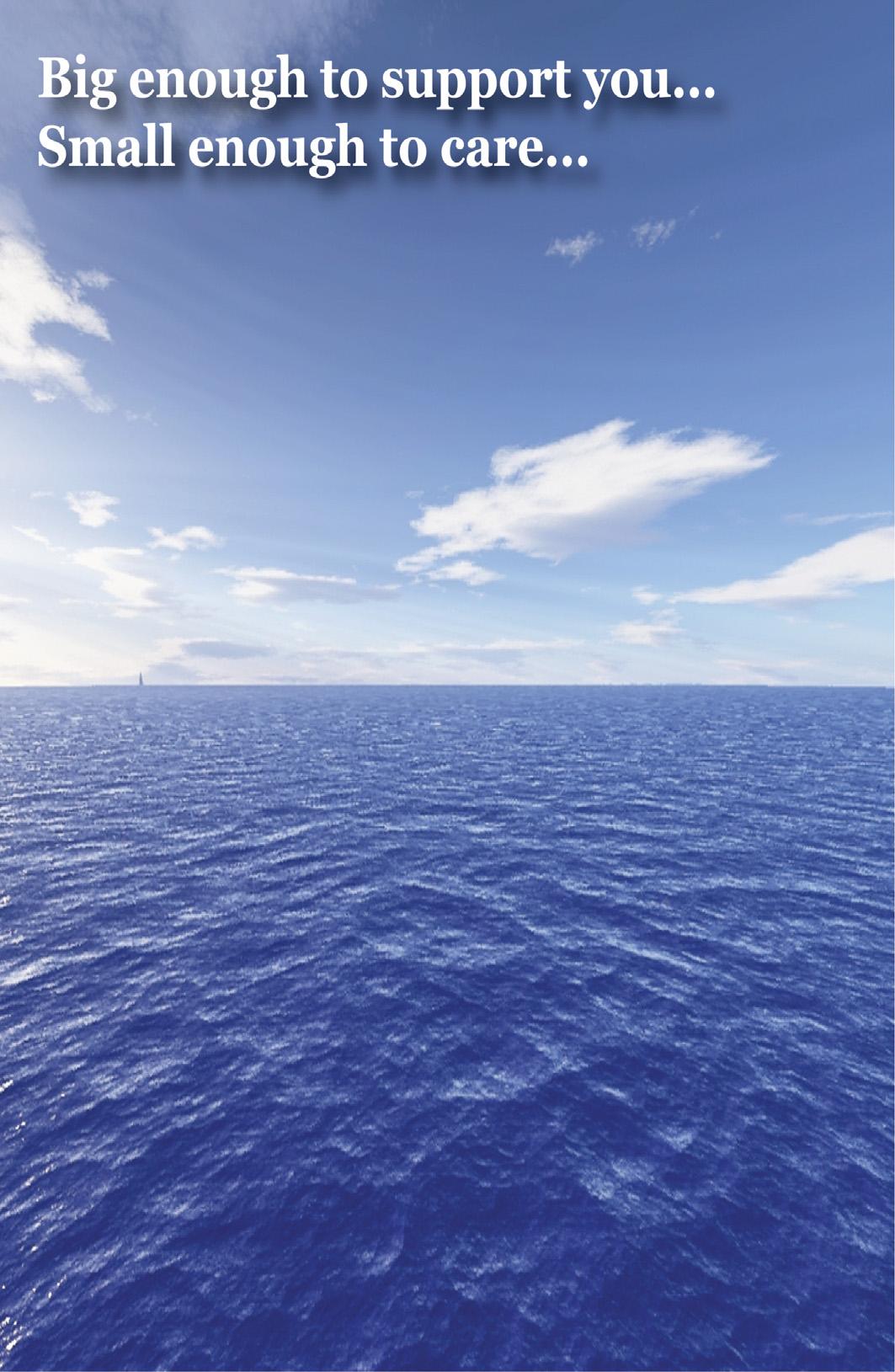
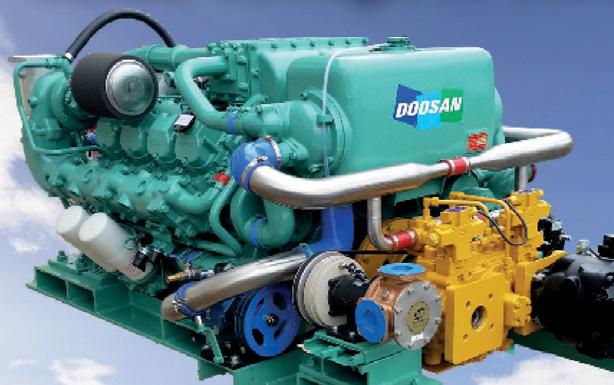
160 - 1200hp

Unit 2, Cavalier Road, Heathfield Industrial Estate Newton Abbot, Devon, TQ12 6TQ Tel: +44(0)1626 830910 Email: info@watermota.co.uk www.watermota.co.uk
RECORD GROWTH FOR OFFSHORE WIND
There’s record capacity growth for off shore wind as it continues to play a vital role in global energy transition
Research released by the data analyse fi rm Clarksons Research shows 2021 saw record start-ups for the industry (84 farms, 18.5 GW, 3,400 turbines) increasing global active capacity by 58% to an all time high of 50.5 GW.
”This takes offshore wind to approximately 0.3% of total global energy supply: our energy transition modelling suggests this could reach 6-9% by 2050 and generate 4,870 TWh to 5,990 TWh of power,” said Steve Gordon, managing director of Clarksons Research.
INDUSTRY INTELLIGENCE
Mr Gordon said that China led the way for new capacity additions and overtook the UK as the largest offshore wind market, with 16 GW coming online, mostly in the final two months of the year, ahead of the expiry of a government subsidy deadline at the end of the year.
New capacity additions were more modest in Europe, as 1.8 GW was fully commissioned, with 17 GW currently under development in the region. .
In addition, offshore wind project CAPEX commitments reached US$44.6bn in 2021, the second highest total on record, with a number of significant projects reaching FID, including the first utility scale offshore wind project in the US - Vineyard Wind.
In Europe alone, US$18.7bn of project CAPEX was committed to offshore wind projects, compared to the US$10.3bn committed to offshore oil and gas projects.
The wind vessel market also continued to evolve, reaching nearly 1,100 vessels by year end.
Global WTIV utilisation averaged 83% in the year, while exceptional demand for vessels off China consistently kept utilisation over 90% in the second half of the year.
Rates responded, with the average dayrate assessment for thirrd generation WTIVs in Europe up 18% across the year besides increases in the C/SOV market also. Dayrates reportedly quadrupled off Guangdong in China in the middle of the year.
Record newbuild investment developed during 2021, with over US$4bn of orders placed and increasing focus on alternative fuels and energy saving technologies. This included over 17 WTIV newbuild contracts placed totalling US$2.5bn, the highest yearly total on record. Fifteen C/SOVs were ordered totalling US$0.8bn, also the highest number on record.
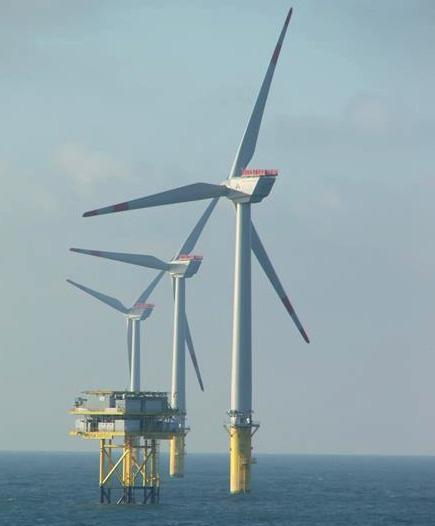
Source: SteKrueBe/Wikipedia CC BY-SA 3.0 8 The year 2021 was
another record year for the sector both for capacity and vessel demand
WTIV for fast-growing US wind market
Friede & Goldman has announced that the classifi cation society, American Bureau of Shipping has granted Approval in Principle for its wind turbine installation vessel (WTIV) BargeRack technology.
F&G is keen on contributing its expertise and technologies to further advance and accelerate the development of US offshore wind.
F&G believes its BargeRack technology is a superior feeder vessel solution. Typical feeder vessels are inherently risky due to motions during turbine equipment handling. Building upon F&G’s jack-up expertise, F&G engineers created a new WTIV design that
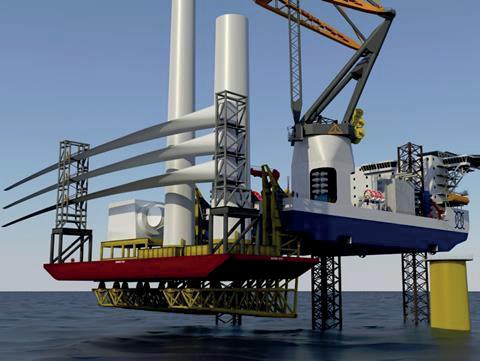
8 Friede & Goldman’s jack-up vessel technology
completely eliminates feeder vessel motions, resulting in safe and simple turbine installation. F&G’s BargeRack technology also reduces feeder vessel cost by an order of magnitude compared to other feeder solutions.
In recent years, F&G has been applying their knowledge and technology from the over 120 F&G built oil-field jack-up rigs to the offshore wind industry. This technology includes their robust leg design, leg wear extended life cycle, easily accessible jacking pinions for in-service maintenance, fully automatic lubrication systems, wear compensating guide systems, afloat spud can inspection & maintenance, etc. – all designed to reduce downtime and increase productivity







